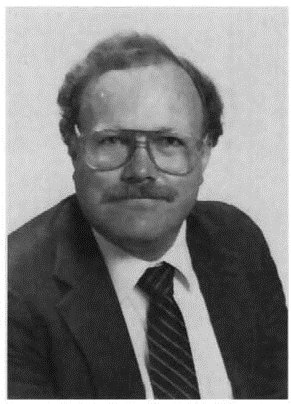
Randall E Winans
Henry H. Storch Award in Fuel Chemistry
sponsored by Exxon Research & Engineering Co.

RANDALL E. WINANS of Argonne National Laboratory is one of the
leading authorities on relationships between coal structure and reactivity.
He has sought to determine these relationships via two contrasting
approaches: characterization studies, in which complex coal macromole-,
cules are broken down into simpler, more recognizable structures,
and artificial coalification studies, in which coal-like structures are synthesized
from lignin and other materials.
Coals consist largely of complex and insoluble macromolecules of
varied structures. The elucidation of these structures to facilitate the
development of improved method for the conversion of coal into usable
fuels and chemicals has been the major focus of Winans' research.
Very few techniques provide direct structural information on intact
coal samples. Therefore, coal chemists have frequently used degradation
techniques to break down the matrix into components that can
be determined analytically. However, commonly used pyrolytic and
oxidative degradation techniques result in secondary reactions or extensive
degradation of the basic structural units contained in coal.
Winans and coworkers therefore developed a mild oxidation procedure
involving the refluxing of coal with pyridine and iodine, followed by
oxidation with alkaline silver oxide. The procedure forms a soluble
material with little or no alteration of chemical structure.
Studies based on this technique have led to a new theory on the
aromatic character of coals. Previously, it had been thought that
aromatics dominate coal structure. However, in lower-rank coals
with less than 80% carbon content, results of Winans' mild oxidation
procedure suggest that single-ring aromatics are the major structural
unit.
In addition to his analytical work, Winans, in association with Ryoichi
Hayatsu of Argonne, has succeeded in preparing coal-like structures
from biological materials in a geologically realistic environment. One
of Winans' colleagues notes that this work necessitated a rethinking of
then-current theories on the origin of coals.
Winans received a B.S. in chemistry from Michigan Technological
University, Houghton, Mich., and M.S. and Ph.D. degrees in physical
organic chemistry from Cornell University. Following a postdoctoral appointment
at Argonne, Winans signed on as a full-time employee of
the laboratory, where he is currently group leader of coal chemistry.
C&EN November 16, 1987